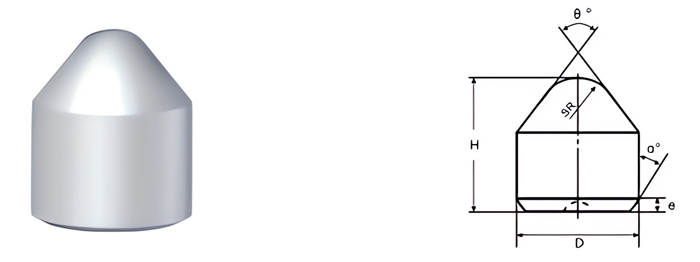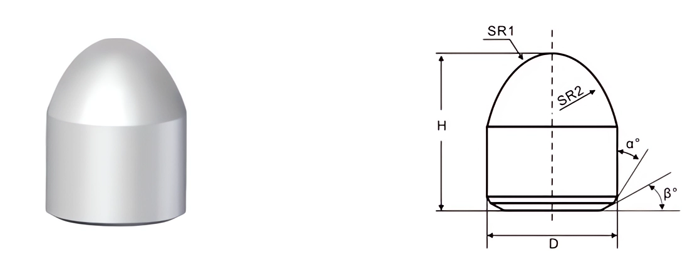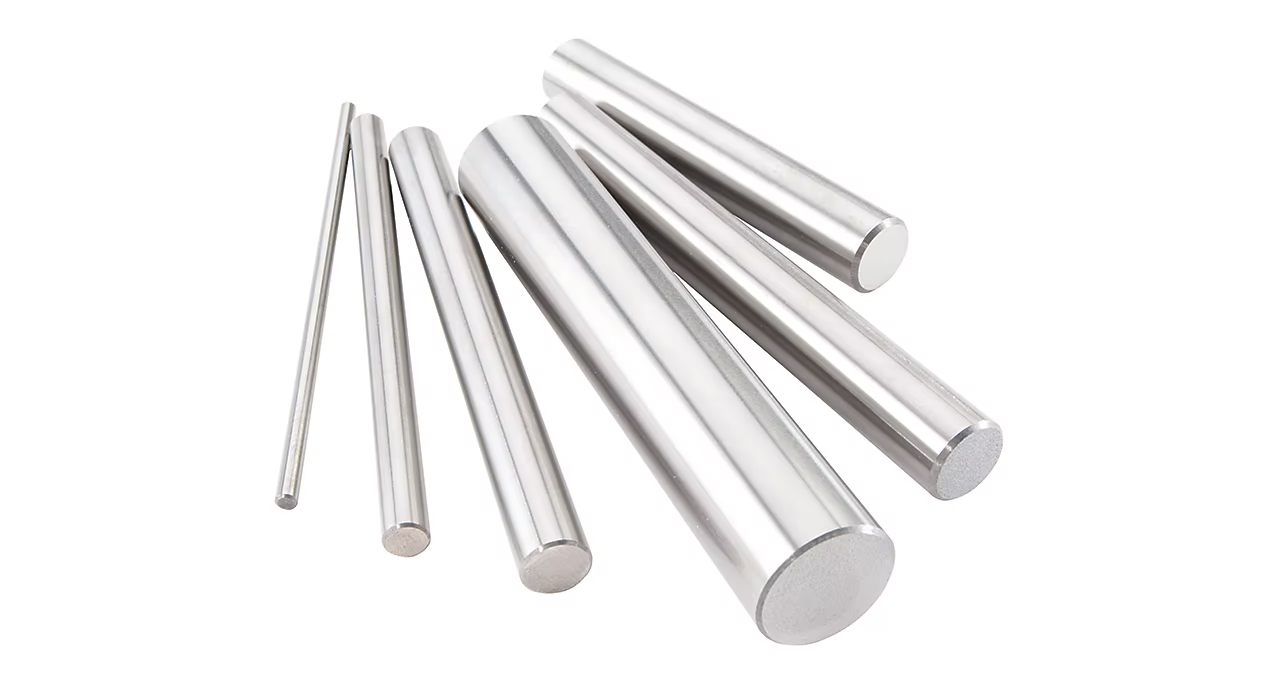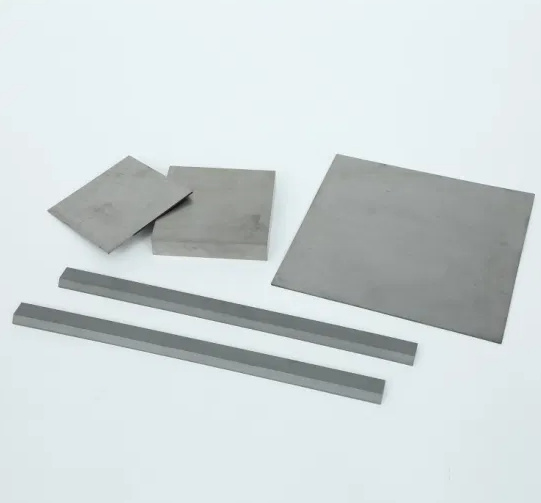Conquering Abrasion, One Button at a Time: Spherical, Conical, and Parabolic Carbide Solutions
The mining industry demands unwavering strength and resilience. As essential components in a range of drilling and crushing equipment, tungsten carbide buttons stand as champions against the relentless forces of abrasion, impact, and wear. But not all tungsten carbide buttons are created equal. This guide focuses on three key types—spherical, conical, and parabolic—unveiling their unique characteristics and how they optimize performance in demanding mining applications.
Why Tungsten Carbide Buttons Are Mining’s Unsung Heroes
Beyond Ordinary Wear Parts: Understanding the Value Proposition
- Extreme Hardness: Tungsten carbide boasts exceptional hardness, significantly higher than most metals and rocks, making it ideal for resisting abrasive wear in mining operations.
- Impact Resistance: Tungsten carbide buttons can withstand the high-impact forces common in mining, ensuring longevity and reducing the need for frequent replacements.
- Versatility in Application: Spherical, conical, and parabolic tungsten carbide buttons each offer distinct advantages depending on the specific mining application and the materials being processed.
Decoding the Designs: Spherical, Conical, and Parabolic Buttons Explained
Shape Matters: How Geometry Influences Performance
1. Spherical Buttons:
- Characteristics: As the name suggests, these tungsten carbide buttons feature a smooth, spherical surface.
- Advantages: Provide excellent wear resistance in high-impact applications due to their ability to distribute stress evenly.
- Ideal For: Ball mills, grinding mills, and other applications where a rolling, crushing action is desired.
2. Conical Buttons:
- Characteristics: These tungsten carbide buttons have a tapered, conical shape with a pointed or flat tip.
- Advantages: Offer good penetration and efficient material removal, particularly in hard rock formations.
- Ideal For: Drilling tools, rock drilling bits, and applications requiring a combination of cutting and crushing action.
3. Parabolic Buttons:
- Characteristics: These tungsten carbide buttons have a curved, parabolic shape, often with a flat or slightly indented top surface.
- Advantages: Provide a balance of penetration and wear resistance, making them suitable for a variety of mining applications.
- Ideal For: Drag bits, foundation drilling tools, and applications requiring a combination of cutting, scraping, and crushing action.



Technical Specifications: A Comparative Look at Button Properties
From Composition to Standards: Key Data Points
| Feature | Spherical Buttons | Conical Buttons | Parabolic Buttons |
|---|---|---|---|
| Type | Spherical | Conical | Parabolic |
| Composition | Tungsten Carbide (WC) with Cobalt (Co) or Nickel (Ni) binder | Tungsten Carbide (WC) with Cobalt (Co) or Nickel (Ni) binder | Tungsten Carbide (WC) with Cobalt (Co) or Nickel (Ni) binder |
| Hardness (HV30) | 1400 – 1800 | 1500 – 1900 | 1450 – 1850 |
| Transverse Rupture Strength (N/mm²) | 1800 – 2500 | 1900 – 2600 | 1850 – 2550 |
| Impact Resistance | Excellent | Very Good | Good |
| Wear Resistance | Excellent in high-impact, rolling applications | Very good in penetration and cutting applications | Good balance of wear and penetration resistance |
| Sizes and Shapes | Various diameters available | Various diameters and tip angles available | Various diameters and curvatures available |
| Grades and Standards | Meet ISO, ASTM, and other relevant industry standards | Meet ISO, ASTM, and other relevant industry standards | Meet ISO, ASTM, and other relevant industry standards |
Applications in Mining: Where Each Button Type Shines
From Exploration to Processing: A Range of Use Cases
- Drilling and Blasting: Conical buttons are commonly used in drill bits for exploration drilling, production drilling, and blast hole drilling due to their efficient penetration capabilities.
- Crushing and Grinding: Spherical buttons excel in ball mills and grinding mills, where their rolling action effectively crushes and grinds ore.
- Tunnel Boring: Parabolic buttons are often used in tunnel boring machines (TBMs) for their balance of wear resistance and penetration in varying ground conditions.
- Mining Excavation: Drag bits and other excavation tools often utilize a combination of button types, with conical buttons for initial penetration and parabolic or spherical buttons for wear resistance in abrasive soils and rock.
Comparative Analysis: TRUER vs. Industry Leaders
Navigating the Market: A Side-by-Side Comparison
| Supplier | Location | Country | Price Range (per piece) | Specialties |
|---|---|---|---|---|
| TRUER | Shanghai, China | China | $12 – $55+ | Custom-engineered solutions, rapid prototyping, exceptional customer support |
| Element Six | Global Headquarters: London, UK | UK | $18 – $70+ | Advanced material science, high-performance carbide grades for extreme wear applications |
| Kennametal | Global Headquarters: Pittsburgh, PA | USA | $15 – $60+ | Wide range of standard and custom button designs, extensive industry experience |
| Sandvik Coromant | Global Headquarters: Sandviken, Sweden | Sweden | $16 – $75+ | Innovative tooling solutions, focus on sustainability and performance optimization |
Note: Prices are approximate and can vary significantly based on button size, geometry, grade, quantity, and other factors.If you want to purchase affordable, corrosion-resistant and durable carbide buttons, click here.
Advantages and Limitations: Weighing the Trade-offs
Making Informed Decisions: A Balanced View of Each Button Type
| Button Type | Advantages | Limitations |
|---|---|---|
| Spherical | – Excellent wear resistance in high-impact applications<br> – Even stress distribution | – Lower penetration rate compared to conical buttons<br> – Not ideal for applications requiring aggressive cutting |
| Conical | – Good penetration and material removal<br> – Suitable for hard rock formations | – Higher wear rates compared to spherical buttons in high-impact applications<br> – Can be prone to breakage under extreme side loads |
| Parabolic | – Balance of penetration and wear resistance<br> – Versatile for a range of mining applications | – Not as specialized as spherical or conical buttons for specific applications<br> – May require more frequent replacement compared to spherical buttons in high-impact, rolling applications |
Beyond the Basics: Factors Influencing Button Performance and Longevity
Maximizing ROI: Key Considerations
- Material Selection: Choosing the right carbide grade for the specific application is crucial, considering factors like abrasion resistance, impact strength, and corrosion resistance.
- Attachment Method: Proper brazing or welding techniques are essential for ensuring a secure bond between the button and the base material, preventing premature failure.
- Operating Conditions: Factors like temperature, pressure, and the presence of corrosive materials can impact button performance and lifespan.
Why Choose TRUER?
Your Partner in Mining Efficiency:
TRUER goes beyond simply supplying tungsten carbide buttons. We are your dedicated partner in optimizing mining operations. Here’s why industry leaders choose TRUER:
- Uncompromising Quality: We source the highest-grade tungsten carbide and employ rigorous quality control measures throughout our manufacturing process.
- Customization Expertise: Our team of engineers thrives on developing innovative, custom-engineered button solutions tailored to your unique mining challenges.
- Rapid Prototyping and Production: We understand the critical role of speed in the mining industry. Our agile processes enable us to deliver prototypes and production runs efficiently.
- Exceptional Customer Support: We’re with you every step of the way, providing expert technical guidance and support to ensure your success.
Frequently Asked Questions: Addressing Your Mining Button Queries
1. How do I determine the best tungsten carbide button type for my specific mining application?
The optimal button type depends on factors like the material being mined, the type of equipment used, and the desired balance between penetration and wear resistance. Consulting with our technical experts is recommended for personalized guidance.
2. What are the typical wear patterns observed in different button types, and how can I identify when replacement is needed?
Wear patterns vary depending on the button type and operating conditions. Common signs of wear include flattening of spherical buttons, chipping or breaking of conical tips, and general erosion of the button surface. Regular inspection and replacement based on established wear limits are crucial.
3. Can TRUER provide tungsten carbide buttons with specialized coatings for enhanced wear or corrosion resistance?
Yes, we offer a range of surface treatments and coatings that can further enhance the performance and longevity of our buttons in demanding mining environments.
4. What is the typical lead time for ordering custom tungsten carbide buttons from TRUER?
Lead times for custom orders vary depending on the complexity of the design and the quantity required. Contact our sales team for a personalized quote and lead time estimate.
5. Does TRUER offer on-site technical support or training related to the use and maintenance of your tungsten carbide buttons?
We provide comprehensive technical support, including on-site consultations, training programs, and troubleshooting assistance, to ensure you get the most out of our products and optimize your mining operations.



